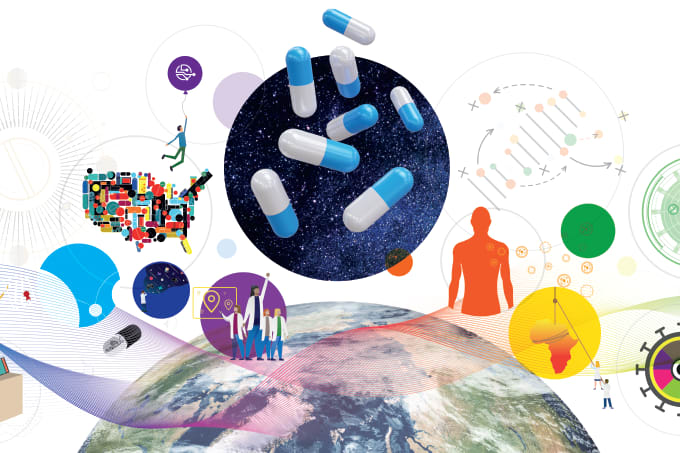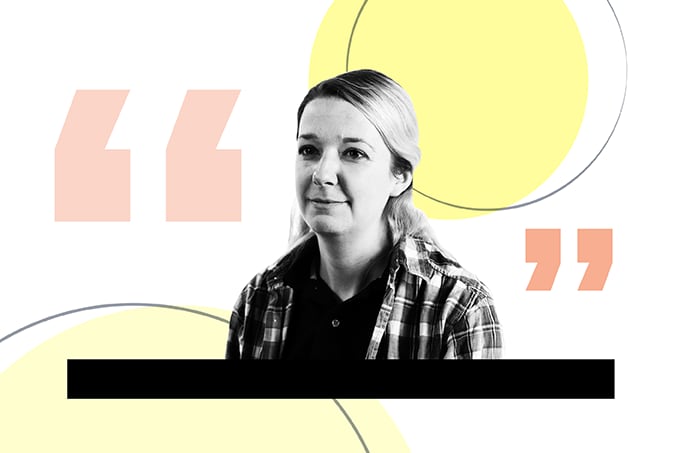
In September, during the World Medical Innovation Forum 2025, academic leaders at Mass General Brigham (MGB) identified the top 12 “Big Ideas in Medicine”. Including scalable genetic medicines, brain-based immunotherapies, and a commitment to tackle the antimicrobial resistance challenge, it looks like MGB academics and administrators have begun to map out the future of drug discovery research.
So what might be the current “Big Ideas in Medicine Manufacturing”? From particularly disruptive uses of AI and automation to increase output and scalability, to indisputable results from sustainability initiatives. From formulation to fill-finish, we asked a range of industry experts a single question: What’s getting stakeholders excited about the future of pharma manufacturing?
Mike Hampton, Chief Commercial Officer, Sapio Sciences
“AI is becoming foundational to medicine manufacturing, supporting more precise control over process design, monitoring and optimization. In biologics, key variables can now be tracked in real time, with AI models identifying early signs of process deviation to avoid a costly batch failure.
“Digital twins add a further element of predictability, enabling teams to simulate scale-up scenarios and test parameter changes before a single batch is run. This is helping establish a more connected ‘lab-in-the-loop’ model of manufacturing, where insights from production flow directly back into research and accelerate the development cycle.
“AI is also making the scale-up process more predictable. Subtle changes in inputs can lead to inconsistent outcomes as processes move from small-scale to large-scale production. Sophisticated AI systems can now analyze historical manufacturing data across products to model how changes in critical process parameters affect performance to expected critical quality attributes. This enables manufacturers and CDMOs to anticipate how materials will behave at scale, from ingredient properties to final product quality.
“As new frameworks emerge, AI will have a clearer structure to support during technology transfer. One such framework, CD-DH (Common Data and Digital Handling), is a developing standard that maps the data, methods, and competencies required to scale processes from lab to plant. With a defined model in place, AI systems can help translate lab-scale methods into production-ready procedures with greater consistency and confidence.”
Edwin Stone, CEO, Cellular Origins
“If there is one ‘big idea’ shaping the future of medicine manufacturing, it is scale. The industry has done the hard work of proving the science, but growth doesn’t happen without the ability to manufacture consistently, at volume, and at cost. It has been shown for a long time by cell and gene therapies what is possible in medicine; now the real challenge is industrializing the therapies. It is a huge and complex undertaking that companies are determined to solve by building the technologies and factory systems that make the route to scale as seamless as possible.
“Mobile robotics and AI can already connect existing bioprocessing tools into a unified, adaptive ecosystem, eliminating the need to redesign or revalidate proven processes, and enabling therapy developers to move from clinical to commercial production without disruption. The ‘big idea’ is a factory-ready system that adapts to the biology, not the other way around – delivering industrial-grade reliability and therapeutic integrity.
“The solutions to the challenges of conventional manufacturing that have been hunted for years are being found – and put to use. Automation and AI are no longer futuristic, abstract concepts. They’re now tangible enablers of access. From predictive maintenance to digital orchestration, the industry is seeing measurable improvements in throughput, reproducibility, and sustainability. The shift from bespoke, artisanal production to intelligent, connected manufacture is not just a technical transformation. It is what will make advanced therapies truly global, ensuring that every patient who needs them can access them.”
Jekaterina Kalinienė, Head of BioTech Lab at Innovation Agency Lithuania:
“From my perspective, the biggest “Big ideas in medicine manufacturing” right now all revolve around medicine finally breaking free from physical limitations. A perfect example is the world-first remote robotic stroke procedure that recently made headlines – and was powered by technology created by a Lithuanian company, Sentante. This is not just another innovation story. It is a historic moment indeed, showing that extremely precise medical interventions no longer depend on geography. A neurosurgeon in Florida, a patient in Scotland, and the procedure happens with millisecond-level precision.
“This is exactly where the future of pharmaceutical and medical manufacturing is going: processes becoming software-defined, remotely controlled, supported by AI, sensors, and robotics. So much of what once required massive facilities, specialized onsite teams, or physical presence can now be executed from anywhere. That means higher scalability, better quality control, less waste, more sustainability, and, most importantly, way greater accessibility for patients. Personally, I find this incredibly inspiring because breakthroughs like this open the door for small, innovation-driven countries like Lithuania to not just participate, but genuinely help shape global progress.”
“By 2026, we’ll see AI interfaces sitting on top of all enterprise data, inside and outside the organization, becoming completely commonplace. In 2024, this was science fiction. In 2025, it became possible. By 2026, it will be accomplished.” – Lance Hill, Founder and CEO, Within3
Jon Ellis, CEO, Trenchant BioSystems
“The most important big idea is not a shiny new technology or process, but a refusal to accept the status quo. Cell and gene therapy innovations like CAR-T have transformed the therapeutic landscape, but its realization has been failed by lack of acceptable manufacturing solutions. This failure was caused by the inability to accept that you cannot solve complexity with complexity. Rather than address these challenges head on with investment in new technologies, the vast majority of the sector has shrugged its shoulders rather than carry the burden upon them. Those companies presenting themselves as willing to ‘pick up the ball and run’ have only added more layers of technology and hype that have not lived up to their promise.
“Despite all the therapeutic innovation, no demonstrable ability to reach patients has emerged. This is why investors have left in droves over the past few years, and companies such as Novo Nordisk, Galapagos, and Takeda are winding down cell therapy units.
“We have to go back to the drawing board and set a scalable, fully-automated CGT manufacturing goal. We have to reject the failures of the past and realize the potential to reduce manufacturing timelines and costs – by at least 80 percent. We have to control the composition of the therapeutic product. The big idea in medicine manufacturing should be concept, working hand in hand with technology. This is how CGT can save itself.”
Alexander Seyf, CEO, Autolomous
"The cell and gene sector represents the pinnacle of human ingenuity. The most advanced form of medicine ever devised, capable of delivering astonishing, life-saving transformations for previously incurable diseases. Yet, despite this profound innovation in the product itself, our manufacturing processes are lagging. Automation and digital adoption are standard across every other industry, yet an unacceptable 95 percent of cell and gene therapies are still produced manually.
“This represents an increased risk and a significant factor contributing to the sector's slow return on investment. Simply put, large-scale CGT production cannot happen this way.
“The most critical innovation we need is the fundamental adoption of digital manufacturing practices. The biggest idea in medicine today is catching up with common sense: integrating digital workflows to satisfy demand, mitigate risk, and ensure that already approved, life-saving therapies finally reach the patients who are being denied them."
Miguel Forte, CEO, Kiji, ISCT President and board member of ARM
“Great science and clinical efficacy are essential to the success of cell and gene therapy, as is the viability of the business model that rests on extended patient access. Manufacturing is critical to ensuring that success. For the CGT products, particularly the autologous ones, a close to the patient, simple, and less costly manufacturing process should enable more patients to be treated – with a stronger return on investment.
“The development of a decentralized, automated, AI-powered, connected, and closed system is one of the big ideas that should improve the deployment of effective autologous therapies. For allogeneic CGT products, success will come from combining an optimal, consistent, and scalable cell source – such as iPSCs – with the professionalization of cells through gene engineering. This integration will enable allogeneic CGT products with superior clinical biology and efficient, sustainable manufacturing models.”




